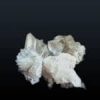OxyContin Brief Description
OxyContin is the brand name for an opioid analgesic containing the active ingredient oxycodone. It is a legal narcotic available by prescription to treat severe pain.
Street Names:
Oxy, OxyCotton, Oxy 80 (for the 80mg dose), or OC
Effects:
OxyContin is a controlled-release medication that, when used correctly, provides extended relief of pain associated with cancer, back pain, or arthritis. However, when the drug is abused, the tablets are often crushed and snorted, chewed, or mixed with water and injected.
Hence eliminating the time-release factor and allowing for a quick and intense rush to the brain. This drug is highly addictive – so higher doses must be taken when a tolerance develops. Illicit drug users have risen drastically and steadily over the last few years.
Appearance:
OxyContin most commonly exists in tablet form. These round pills come in 10mg, 20mg, 40mg, 80mg and 160mg doses. It also comes in capsule or liquid form.
OxyContin’s Short Term Effects
The most serious risk associated with OxyContin is respiratory depression. Because of this, it should not be combined with other substances that slow down breathing, such as alcohol, antihistamines (like some cold or allergy medication), barbiturates, or benzodiazepines.
Other common side effects include constipation, nausea, sedation, dizziness, vomiting, headache, dry mouth, sweating, and weakness. Toxic overdose and/or death can occur by taking the tablet broken, chewed, or crushed. People who abuse the drug (by removing the time-release coating) will experience effects for up to 5 hours. The high that is felt is like an opiate; sedate and euphoric feeling.

Long Term Effects
Using OxyContin chronically can result in increased tolerance to the drug, in which higher doses of the medication must be taken to receive the initial effect. Over time, the drug will become physically addictive, causing a person to experience withdrawal symptoms when the drug is not present.
Symptoms of withdrawal include:
- restlessness,
- muscle and bone pain,
- insomnia,
- diarrhea,
- vomiting,
- cold flashes with goosebumps, and
- involuntary leg movements.
Sources: National Institute on Drug Abuse
The Difference Between Oxycodone and OxyContin
As mentioned before, the active ingredient in OxyContin is Oxycodone, but it (a brand name derived from “oxycodone continuous”) has a time-release mechanism, which means the drug releases in the body over a period of time, and patients have to take the drug less often.
Oxycodone is an Opiate derivative narcotic pain reliever for treating severe, chronic pain. Oxycodone is used in several different analgesics, including OxyContin. Unlike many other pain medications, OxyContin does not contain aspirin or acetaminophen.
Oxycodone has many of the same effects as Heroin. In fact, it is called the poor mans Heroin or Hillbilly Heroin. There has been a lot of concern over the misuse of Oxycodone. A relatively high number of deaths have been reported with these drugs. OxyContin uses between 10-165 mg. of Oxycodone, much more than other drugs containing Oxycodone.
Addicted people and abusers will chew or crush the pill, bypassing the drug’s time-released layer. Then, it can be swallowed, snorted, or mixed with water and injected. By doing this, the “high” comes on very quickly and strongly. This is the rush that most abusers seek.
Similarities to Other Drugs
Because Oxycodone reacts negatively to so many other drugs, including alcohol, many deaths have been associated with the drug. An increase in emergency room visits has also been noted. Teenagers especially have taken interest in the drug, but there are people from all age groups and walks of life finding out about the drug every day.
Oxycodone is similar in action to codeine and morphine. It is thought to interact with pain receptors in the brain. It actually does not get rid of the pain but makes a person more tolerant of it or able to ignore it. Oxycodone is also a cough suppressant. The only difference between Oxycodone and OxyContin is the time-release layer.
In Conclusion
Any narcotic can be dangerous, but special interest has been taken in OxyContin because of the high number of deaths and near-deaths associated with it.
Many people feel there are safer alternatives to both OxyContin and Oxycodone. Other drugs besides this one that uses Oxycodone are Percodan and Percocet. Like most other pain relievers, these are mixed with over-the-counter medications (aspirin or Tylenol). The danger of OxyContin is that there is no buffer. It is pure Oxycodone with a time-released layer that is easy to avoid. Parents should be aware that this drug is available on the street, and many teens are trying it.
List of Drugs
REVIEWS

Marc J. Bernard
Author,
Substance Use Disorder & Recovery Professional,
Referral & Consultation Counsellor



















